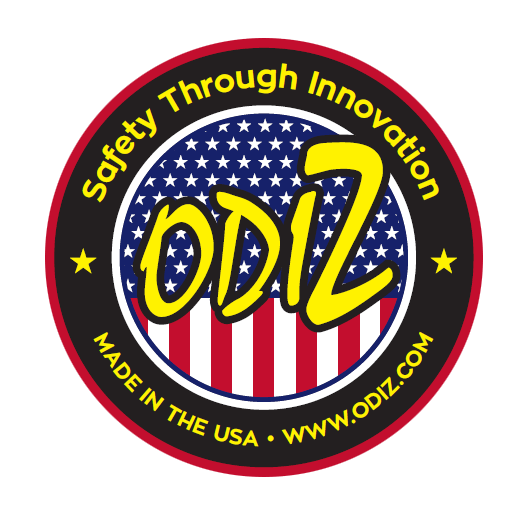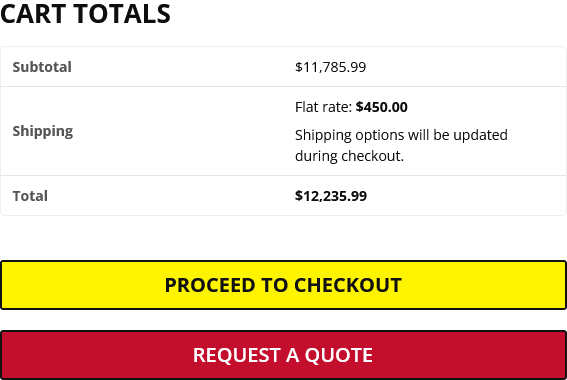ODIZ Bench Grinder Adjustment Safety Kit
$49.99
The ODIZ Bench Grinder Wheel Changing Safety Kit includes magnetic tools and a patented No-Go Gauge for OSHA-compliant wheel adjustments and safer grinder operation.
Not sure where to start? Reach out to our team to learn more.
To request more information about this product or service, please complete the form below. You can also chat live with one of our specialists via the widget in the bottom-right corner of your screen or call us at (574) 318-4333.
Product Overview
The ODIZ Bench Grinder Wheel Changing Safety Kit is designed to improve efficiency and ensure compliance with OSHA 29 CFR 1910.215 and ANSI B7.1 abrasive wheel standards.
By providing dedicated tools at the Point of Use (POU), this kit helps operators safely perform grinder adjustments while reducing downtime and risk of non-compliance.
Why Wheel Changing Safety Matters
Improper adjustment of bench grinder tool rests and tongue guards is one of the leading causes of wheel breakage and OSHA violations.
This kit gives operators quick access to the right tools and a patented magnetic No-Go Grinder Safety Gauge to verify gap compliance before every use.
With the ODIZ kit, facilities can strengthen grinder safety programs and support EHS initiatives without guesswork.
Kit Components
- 8” Crescent Wrench with embedded magnets – securely attached with heavy-duty wire for safe wheel changes at POU
- 5mm Allen Wrench with magnetic holder – mounted using Neodymium magnets for quick access when adjusting tool rests and tongue guards
- 24” Wire Attachment – provides secure tethering and accessibility of tools
- Patented Magnetic No-Go Grinder Safety Gauge – verifies tool rest and tongue guard spacing:
- 1/8” end for checking bottom tool rest gap per OSHA 1910.215(a)(4)
- 1/4” end for checking top adjustable tongue guard gap per OSHA 1910.215(a)(4)
Directions for Use
Operators should use the crescent wrench when changing worn grinder wheels, keeping the tool safely tethered for POU use.
The Allen wrench is used to properly adjust tool rests and tongue guards, ensuring they are within OSHA-mandated clearance limits.
Before starting the grinder, always use the No-Go Safety Gauge to confirm that both the tool rest and tongue guard meet required spacing tolerances.
Specifications
- Bench Grinder Adjustment Safety Kit w/ Magnet Gauge (Item #: 59558)
- Bench Grinder Adjustment Safety Kit w/ Wire Gauge (Item #: 59565)
- Custom-made product ships within 1–2 business days of order
1910.215(a) – General Requirements for Abrasive Wheel Machinery
OSHA 1910.215(a) — General Requirements for Abrasive Wheel Machinery
Paragraph (a) sets the baseline rules for using abrasive wheels: machines must have safety guards,
guards must be designed and fastened correctly, proper work rests are required on offhand grinders,
and some items are excluded from this section. Use this as the top-level guidance before drilling into
the subsection-specific requirements.
(a)(1) Machine guarding — When guards are required (and the limited exceptions)
Abrasive wheels may be used only on machines equipped with safety guards. Limited exceptions apply for:
- Internal work while the wheel is within the workpiece.
- Mounted wheels ≤ 2 in. diameter used in portable operations.
- Types 16, 17, 18, 18R, and 19 (cones, plugs, threaded-hole “pot balls”) when the work itself provides protection.
(a)(2) Guard design — What the guard must cover and how it’s secured
The guard must cover the spindle end, nut, and flange projections, stay aligned with the wheel, and be
secured so that the fastenings are stronger than the guard itself. Two narrow exceptions allow exposure of
the spindle end, nut, and outer flange where the work provides protection, and for portable saws.
(a)(3) Flanges — Cross-reference
Grinding machines must be equipped with flanges per §1910.215(c) (minimum diameters, types/exceptions, and mounting rules).
See your site’s child category for 1910.215(c) for the detailed tables and figures.
(a)(4) Work rests — Required on offhand grinders
- Use a rigid, adjustable rest to support the work.
- Keep the opening to the wheel at ≤ 1/8 in (3.2 mm) to prevent jamming and wheel breakage.
- Clamp after each adjustment; never adjust with the wheel in motion.
(a)(5) Excluded items
Natural sandstone wheels and metal/wooden/cloth/paper discs with abrasive layered on the surface are excluded from §1910.215.
Practical inspection cues (use for audits & training)
- Verify a guard is present unless one of the (a)(1) exceptions applies; document the exception if used.
- Confirm guard coverage encloses spindle end, nut, and flange projections and remains aligned during operation.
- Check that fasteners exceed guard strength (no loose, mismatched, or under-sized hardware).
- On bench/pedestal grinders, measure and record work-rest clearance ≤ 1/8″; re-adjust for wheel wear.
- Cross-check machine/wheel type against exclusions before applying §1910.215 requirements.
Link this category to:
- Your grinder guards, tongue guards, eye shields, and gap-gauge product pages.
- Child categories for 1910.215(b) (guarding specifics), 1910.215(c) (flanges), and 1910.215(d) (mounting/operation).
- Related categories: 1910.212 (general machine guarding), 1910 Subpart I (PPE).
FAQ
Do I ever run a grinder without a guard?
Only in the narrow cases listed in (a)(1): internal work within the part, mounted wheels ≤ 2″ in portable use,
and certain cone/plug types where the work itself protects the operator. Otherwise, a safety guard is required.
What exactly must the guard cover under (a)(2)?
The guard must cover the spindle end, nut, and flange projections, remain aligned with the wheel, and use
fasteners whose strength exceeds that of the guard. Limited exposure of these parts is allowed when the work
provides protection or for machines designed as portable saws.
How tight does the work rest need to be?
Keep the opening to ≤ 1/8″. Adjust for wheel wear and clamp securely; never adjust with the wheel running.
B7.1 – Safety Code for the Use, Care, and Protection of Abrasive Wheels
ANSI B7.1 — Safety Code for Abrasive Wheels
ANSI B7.1 is the consensus (industry) safety standard that governs the safe use, care, handling, mounting, guarding, and protection of abrasive wheels and the machines that use them. While OSHA regulations (like 1910.215) reference it, ANSI B7.1 provides the technical detail, definitions, and performance rules that shape how those OSHA provisions are implemented. :contentReference[oaicite:0]{index=0}
Scope & Definitions
The standard begins by defining terms (e.g. “grinding wheel,” “mounting,” “guard,” “modification”) and clarifies which types of abrasive products fall under its requirements (e.g. excluding natural sandstone, coated abrasives, etc.). :contentReference[oaicite:1]{index=1}
It also establishes the baseline of what is meant by “safe use, care, and protection” of these wheels. :contentReference[oaicite:2]{index=2}
Handling & Storage
- All abrasive wheels must be handled with care — chipping, dropping, bumping, or impact can cause internal defects. If a wheel is dropped or suspected of having damage, it must not be mounted. :contentReference[oaicite:3]{index=3}
- Do *not* roll wheels hoop-fashion; transport wheels on proper racks/trays or support means. :contentReference[oaicite:4]{index=4}
- Store wheels in dry conditions, with racks/bins/drawers, protected from high humidity, temperature cycling, freezing, or solvents. :contentReference[oaicite:5]{index=5}
- Use a first-in, first-out rotation method for inventory to avoid old stock being forgotten. :contentReference[oaicite:6]{index=6}
Machine Conditions & General Operating Rules
ANSI B7.1 emphasizes that wheels themselves are passive; accidents stem from poor machine design, misuse, or improper operating conditions. :contentReference[oaicite:7]{index=7}
The standard covers safe operating rules such as:
- Always check that the machine’s spindle speed does not exceed the wheel’s maximum rated speed. :contentReference[oaicite:8]{index=8}
- Before full operation, run a new or remounted wheel under guard for at least one minute in a safe zone to check for hidden defects. :contentReference[oaicite:9]{index=9}
- Inspect wheels for cracks, chips, or other damage (a “ring test” is commonly used on vitrified wheels) before mounting. :contentReference[oaicite:10]{index=10}
- Use proper PPE, maintain awareness of vibration, balance, truing/dressing procedures, and safe start-up/shutdown rules. :contentReference[oaicite:11]{index=11}
Guarding & Enclosures
One of the core roles of ANSI B7.1 is to describe guard requirements (coverage, strength, design criteria) to contain fragments if a wheel fails. :contentReference[oaicite:12]{index=12}
Key points include:
- Guards must cover the spindle end, nut, and flange projections and be aligned properly with the wheel. :contentReference[oaicite:13]{index=13}
- The strength of the guard’s fasteners must exceed the guard’s strength (i.e. fasteners should fail after the guard, not before). :contentReference[oaicite:14]{index=14}
- Design and construction of guards should consider worst-case wheel burst energy and use safety factors; ANSI gives example performance metrics (though users should default to manufacturer/consensus). :contentReference[oaicite:15]{index=15}
- In specific operations where the work itself shields the operator or for certain portable machines, limited guard exposure may be acceptable. :contentReference[oaicite:16]{index=16}
Flanges, Mounting & Wheel Assembly
Proper wheel mounting is essential for safe operation; ANSI B7.1 provides detailed criteria for flanges, mounting tolerances, and assembly. :contentReference[oaicite:17]{index=17}
Highlights:
- Flanges must be the correct diameter, thickness, and finish (flat, parallel, undamaged) for the wheel being used. :contentReference[oaicite:18]{index=18}
- Blotters or washers are allowed between wheel and flange where specified. :contentReference[oaicite:19]{index=19}
- Mounting should never force a wheel onto the arbor; wheels should seat freely, and arbor nut torque must be careful—not too loose or too tight. :contentReference[oaicite:20]{index=20}
- Reducing bushings (adapters) and “mount up / mount down” markings are specified in ANSI for certain wheel types. :contentReference[oaicite:21]{index=21}
Speeds, Special Applications & Conversions
ANSI B7.1 emphasizes that wheel speed is critical to safety. Because rotational energy rises with the square of angular velocity, exceeding wheel-rated RPMs is a major risk. :contentReference[oaicite:22]{index=22}
Additional points:
- If machines are converted or repurposed to run new wheel types or higher speeds, they must be designed or reengineered to meet ANSI guard, mounting, and speed criteria. :contentReference[oaicite:23]{index=23}
- For “special speed” wheels beyond common tables, extra safety margins and guard performance criteria should be evaluated. :contentReference[oaicite:24]{index=24}
Internal linking ideas
- Link from this category to your OSHA 1910.215 category (and subsections) since OSHA defers to ANSI B7.1 for design detail.
- Link to your product pages: safety guards, wheel flanges, mounting kits, blotters, reducing bushings, RPM testers.
- Cross-link to related standards categories: general machine guarding (1910.212), machine tools, and training/PPE standards.
FAQ
Does ANSI B7.1 override OSHA?
No. OSHA is regulatory; you must comply with OSHA. But ANSI B7.1 provides the technical “how” for many requirements OSHA references (especially for guarding, flanges, and mounting). When OSHA cites a compliance requirement without design detail, ANSI (or a more recent consensus standard) is commonly used to fill in the gap.
Is every section of B7.1 enforceable?
Only those explicitly or implicitly referenced by OSHA or by your jurisdiction become enforceable in your workplace. Other parts (e.g. annex examples or optional performance criteria) provide best practices guidance but may not be legally required.
Which version of ANSI B7.1 is current?
The 2010 edition is commonly referenced in industry literature. :contentReference[oaicite:25]{index=25}
Older OSHA / construction regulations may refer to ANSI B7.1-1970. :contentReference[oaicite:26]{index=26}
You should check your jurisdiction or machine manufacturer to confirm which version is recognized locally.









